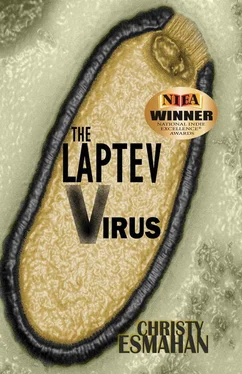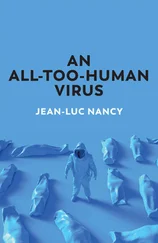Angela nodded her head vigorously. “He’s right.”
“See? So I don’t understand why everyone is so bent out of shape. There are already millions, or I should say, billions of humans infected with Toxoplasmosis. I was reading that it’s probably somewhere between thirty and fifty percent of the population of the world that have this infection now,” declared Shane, crossing his arms.
“But we still don’t know if it has other effects on humans,” said Drew. “What part of the body does it inhabit normally anyway? Do we even know that? Is it the same as in mice?”
“It hangs out in the brain. In both mice and humans,” said Tally.
Drew bristled, his face reddening. “The brain? Are you kidding me? Oh, man, that’s terrible. You’re saying we should infect humans with a pathogen that we know inhabits the brain? That’s insane! What if it has an effect on their behavior or their memory or something? We have far more questions than answers at this point.”
Shane shrugged his shoulders. “I honestly don’t see what the big deal is. Many people already infect themselves willingly. Look at cat owners.”
“Oh, come on, Shane! Be reasonable here. Not all cat owners have Toxoplasmosis, not even by a long shot,” said Tally.
“How do you know? Have you tested them all?” shot back Shane. Sarah could see that this was becoming heated, but she preferred not to interfere yet. There was a place for healthy debate in science, and a meeting such as this was a good one.
“Look,” said Shane in a quieter voice. “I was reading an article about a researcher who has studied Toxo in humans and he claims that tons of cat owners are infected, and they don’t even know it. And probably even if they did know it, they wouldn’t care. All they care about is having a cute little kitty,” he said, the pitch of his voice rising for the last few words. “Does anyone ever stop to consider the consequences before buying a cat and bringing it home?”
“Shane, what are you saying? There’s nothing wrong with bringing home a kitty cat!” said Tally, throwing her arms up. For a second it had looked as if she was ready to slap Shane, but it was probably just Sarah’s overactive imagination.
“Look, it’s all of you who need to be realistic. These people, they let their cats into their homes, allow them to play with their children, walk on their kitchen tables and cabinets, sleep in their beds. It’s no wonder they become infected. And, good for them. Now they are protected. So what would be the big deal in helping other people who don’t have cats get protected too?”
Sarah felt the blood rising to her face. “Shane,” she said through nearly clenched teeth, “what you are proposing is heretical. Didn’t you hear what we just said? It’s way too dangerous to even think about ‘vaccinating’ people with Toxo.”
“Actually, I don’t get it,” said Angela, speaking up. “I mean, I’m certainly no expert, but it sounds like Shane is right. Haven’t cats been domesticated for centuries? It’s not as if cats were some exotic and unknown pet, some rare lizard or South American rodent! We’re talking about house cats. They have been human pets since… well, for a long time. I mean, even the Egyptians had cats thousands of years ago.”
She paused and ran her hand nervously over the surface of the table, back and forth, as if erasing some unseen blemish. “So my question is, if cats were causing this bad infection, this Toxospasmosis or whatever it’s called, how come we’ve never heard of it before? How come we don’t have all sorts of warnings and regulations about cats? Surely the fact that cats are so widespread means that the cat infection that’s protecting the mice from the Laptev virus is actually not a bad thing.”
Shane straightened his shoulders. It wasn’t every day, Sarah thought wryly, that the VP of a large company agreed with him in public.
“See?” said Shane, turning toward Tally, his eyes shining. “You know she’s right! You don’t want to admit it. Cats, even though they can and do infect humans with Toxo, are no more a threat to our society than dogs or fish or any other normal pet that people keep. So why shouldn’t we look seriously at Toxo as a tool for fighting diseases?”
“Actually, Shane,” said Emile, clearing his voice before he continued speaking softly, “I think you are mistaken about the role of cats as carriers of the pathogen.”
Shane narrowed his eyes at Emile who raised his hands as if to fend off Shane’s anger. “I like cats and I’ve always had them as pets. But Angela,” he said, turning to face her, “with all due respect, I think you’re not understanding the whole history of cat domestication. When Shane told me his ideas last night I went online and did some sleuthing. Cats may have been domesticated, as you say, thousands of years ago, but it wasn’t until the 1700s that people actually began bringing them into their homes.
“And it turns out that Drew’s hunch is correct. The incidence of human behavioral alterations, many people call it mental illness, coincidentally began to skyrocket at about the time it became popular to have cats inside the home. Coincidence? I think not. We don’t know for sure, but more and more evidence indicates that the increase in crazy, irrational and antisocial behavior among humans is quite possibly caused by a huge increase in undetected and untreated Toxoplasmosis infections in the population of people who own cats or have come into contact with cats. Which is pretty much everyone.”
No one spoke for a moment while they thought about what Emile had just said. At one point Kevin’s cell phone beeped, but he quickly silenced it.
“So, if I understand you correctly, Emile, you’re saying that people got crazier the more cats were kept indoors?” asked Angela.
Emile nodded, and opened up the lid to his laptop.
“You’ve got to be kidding me!” said Angela, tossing her head dismissively. “I swear I’ve never heard anything like that in all my life!”
Emile was unperturbed by her reaction and continued to tap on the keys of his laptop, calling up the name of another file. Then, punching the “Enter” button with a flourish, he said, “Well, that’s what the records are showing. Take a look. It was in the seventeen hundreds when mental illness started to become much more prevalent in our society.”
“Wow,” said Tally.
“Look, if you don’t believe me,” said Emile, turning his screen toward Angela. “Here are the articles that I bookmarked.”
Everyone leaned in and Sarah could see the tabs of the various articles.
Emile began clicking on each one of them. “It’s contemporary stuff. There’s this investigator, lives in Czechoslovakia. Great story. He began examining himself when he found that he was exhibiting what he considered strange behavior. He wasn’t afraid to jaywalk even in traffic and wasn’t afraid of speaking up against the fascist regime that could imprison him for doing so. He saw that all of his friends and colleagues were afraid and so he began to wonder why he wasn’t and if it could be that something was physically wrong with his brain. He had a blood sample taken and found that he had the Toxoplasmosis infection. After that he started studying brain cysts caused by Toxo and sure enough, those behaviors were typical of other men who had the infection.”
“You mean other people , don’t you?” said Angela.
“No, oddly enough, men have different reactions to the infection than women. Men who are infected become more aggressive and take more risks whereas women who are infected become more social and take fewer risks. It’s pretty odd,” said Emile.
Sarah passed Emile the plug to connect his computer to the projector and soon his screen was visible on the whiteboard. He clicked on the first article and Sarah began skimming through it, her mouth slightly open as she read.
Читать дальше












